I’ve seen it happen dozens of times – maybe hundreds. Someone gets a kalimba with the best of intentions, they sort of connect with it, but they are afraid to really take ownership of the instrument – they doubt their own ability to tune the instrument. And so over time, their kalimba drops out of tune, playing becomes unpleasant, and the kalimba goes into the closet.
But I have also seen the opposite. I have seen people who doubted their own musical ability and doubted they had the technical skills to maintan their instrument’s tuning. However, they so wanted to play the kalimba, that they overcame their self-doubt and connected with their inner musicality, trusted their ear, and successfully tuned their kalimba.
These sound recordings – where you hear me playing each note, properly tuned, slowly, from left to right, for some of our most popular kalimbas – should help you transition into successfully maintaining your instrument’s tuning.
If you play your kalimba lightly, it should stay in tune for months. Playing very hard (for example, playing to be heard over drums or multiple guitars) will make the kalimba go out of tune over hours or days. Dropping the kalimba can also put it out of tune.
You may need to develop one particular skill – which is your musical “ear.” When you hear a note played on the sound file, and you play your kalimba’s corresponding tine, you need to be able to determine if your note is higher, lower, or essentially the same as the note in the recording. If you need help, there are ear training exercises available online and for smartphones.
The first time you listen to the tuning sound file, don’t actually try to do any tuning, but just listen to how your kalimba’s tuning compares to the kalimba on the sound file. Most of the notes should be pretty close, or even indistinguishable.
The basics of tuning: if your note is too high, you need to make the tine’s vibrating length a bit longer – to do so, you pull it out slightly. I wiggle the tines left and right while I pull them out, as this seems to permit me to make very small adjustments in length. If your tine is playing a note that is too low, you need to push the tine in to make the vibrating length shorter.
Another note: I was recently at a jam, and everyone was tuned to a reference note of A = 432 Hz. The standard for decades (and what I was tuned to) has been A = 440 Hz, and all of Kalimba Magic’s kalimbas are tuned to a 440 Hz reference. The 432 Hz reference just means that I had to quickly tune all of my tines down about 30% of a half step in order to be in tune with everyone at the jam. Because of that experience, I am providing sound files with tuning tones referenced to A 432 in addition to the default A 440 referenced tunings.
You might be wondering why all those instruments at the jam were tuned to the A 432 Hz reference. There is a popular movement which asserts that the 432 Hz tuning has more healing properties, but I am not in a position to defend that. Often, the choice to retune to a 432 reference is one based on the preference for the sound of the music at a slightly lower pitch. And in my case, on the day of my jam, the choice was based on practicality: I wasn’t going to get four other people with 30 strings to tune up to me, so I tuned down to them.
By the way, if you want us to send you a kalimba that is tuned to a reference pitch of A 432 Hz, you can request that in the COMMENTS section of the checkout page.
Eventually you will probably want to get a tuner, and will learn how to use the tuner to tune your kalimba. Until then, if you are a little stressed by the idea of tuning your own kalimba, you should just start by listening and getting familiar with the appropriate sound file for your kalimba’s tuning.
If the instrument has two rows of tines, the lower row is played first, left to right, and then the upper row is played, left to right.
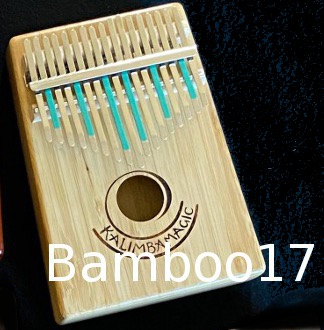
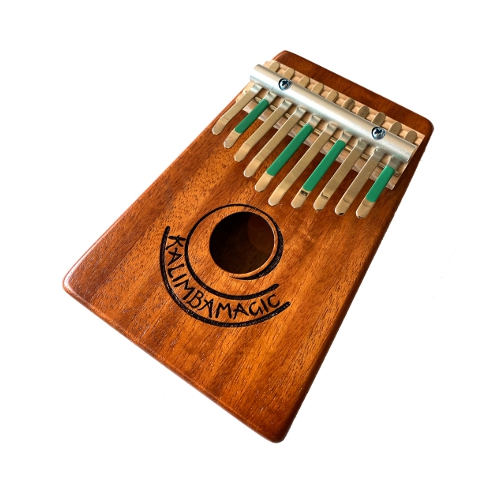

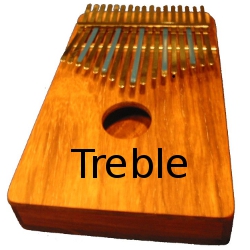



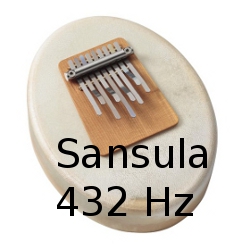
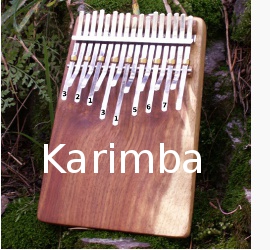



Sign up for our newsletter and free resources with your email address:
We pinky promise not to spam you and to only send good stuff.
 Christmas in July 2025
Christmas in July 2025 Patriotic and American Music for Kalimba
Patriotic and American Music for Kalimba